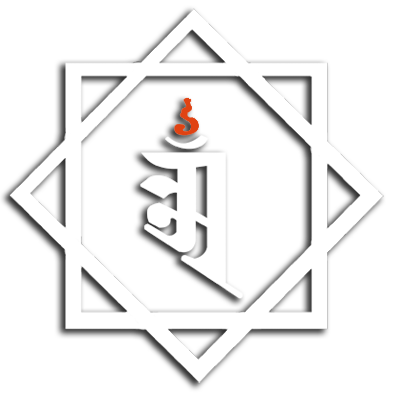ORIGINS OF VEDIC ASTROLOGY
Vedic astrology or jyotiṣa, originated in ancient India around 2500 years ago[1]. Jyotiṣa is a Sanskrit term that can be rendered ‘science of light’ and combines mathematical astronomy with Vedic lore to describe how time and our freewill shape the quality of our destiny. Traditionally[2]. jyotiṣa consists of three divisions:
Gaṇita: Mathematics and astronomy.
Horā: Horoscopy, and has two divisions: Jātaka or birth chart interpretation and muhurta or electional astrology.
Saṁhitā: Deals with a wide variety of astrological and related topics and is somewhat similar to so called mundane astrology in the Western tradition. Physiognomy, the interpretations of omens, the astrology of weather and natural disasters, geopolitical events and annual forecasts of countries all belong to this division.
A person with an advanced understanding of this science can have profound insight into the past. present and future of individual and collective entities.
Origin and role
According to tradition the principles of Vedic astrology, just like the Vedas themselves, were received by sages known as ṛṣis or seers some eons ago in deep meditation and passed on from master to disciple in an oral tradition spanning many millennia before being committed to writing. The Brahmins, the spiritual guides and knowledge keepers of Vedic society, was a cast of metaphysical specialists who would typically be versed in jyotiṣa along with other Vedic sciences.
The Vedic sages understood time or kāla to be a personal manifestation of the Supreme—with its three phases: past, present and future veiling the transcendental nature of the true Self, beyond time, space and causality. Time is seen as the divine regulator of all creation in whose inexhaustible stream countless universes make their appearance and remain for what seems to be the blink of an eye from eternity’s perspective—only to disintegrate like bubbles of foam on a shore.
Vedic culture, as we learn from the Upaṇiṣads, was ultimately concerned with self-realization—the natural fruit of a life lived with balance and wisdom—with Vedic astrology being integral to this goal. Much of what is now considered early Vedic astrology dealt with the timing of yajña or fire sacrifices. These intricate rituals were meant to acknowledge the interdependence of all creation and curb impulses of selfishness and aggression that keep embodied consciousness bound in the coils of saṁsāra. Jyotiṣa was used to actualise the intent of these rituals by aligning their commencement with the cosmic timestream within which they were undertook. This is somewhat analogous to how farmers observe changing weather patterns to decide what and when to plant with an eye on maximising their yield. Brahmin astrologers would similarly examine and interpret the everchanging time cycle to find the appropriate moment that would resonate with the intention of a ritual to ensure its fruition[3]. These rituals, some of which are still observed today, ensured a life of abundance that eventually culminated in renunciation and enlightenment following the four aims of human life[4].
As society developed, jyotiṣa similarly adapted to the spiritual and material needs of the culture and was incorporated into every sphere of life, from deciding the time of royal coronations to fixing the time for conception. Classical Sanskrit treatises discussing muhurta. or electional astrology exhaustively lists the planetary configurations most auspicious for almost every imaginable undertaking.
The notion of time possessing qualities which are imparted at the commencement of an undertaking can be extended to birth itself. This is the realm of jātaka or natal astrology. The birth chart is a symbolic map showing the configuration of the luminaries and planets at the time of birth reflecting the past karmic patterns of the newly embodied consciousness making his or her appearance. From the Vedic perspective we are not born tabula rasa and natal astrology holds a key to decoding the karmic slate linking our present life with previous incarnations.
A competent astrologer can examine these patterns and infer the quality of character, temperament and aptitude of a native—revealing the seeds of an individual’s destiny. Since the body itself is a physical expression of past karma[5] the body could also be read in the absence of a birth chart or to corroborate it[6]. These insights are then combined with an understanding of unfolding time gleaned from astronomical data and mathematical prediction, revealing when and to what degree these potentialities will be stimulated, thus making it possible to predict the time, nature and effect of significant life events. All this allowed the Brahmin astrologers to offer highly sought-after counsel for advancing both the worldly and spiritual aims of society.
Sources cited:
Bhagavad-Gītā, http://gretil.sub.uni-goettingen.de/gretil/1_sanskr/2_epic/mbh/ext/bhg4c__u.htm
Bṛhad Parāśara Hora Śāstra, http://vedicreserve.mum.edu/jyotish/parashara_hora_shastra.pdf
Chakraverti, Santanu (2007), Science in History. In: Jyoti Bhusan Das Gupta (ed.), "Science, Technology, Imperialism, and War", Pearson Education India.
[1] Chakraverti 2007, p. 33.
[2] Bṛhat Pārāśara Hora Śāstram 1.2
[3] The movements of time and it’s changing quality could be observed not only in the sky, but everywhere in the natural world including the subtle movement of the breath, thus giving rise to subbranches of jyotiṣa such as nimitta the interpretation of omens and svara-śastra, divination based on observing the breath.
[4] The four aims of life or puruṣārtha are dharma, religiosity, artha, economic development, kāma, sensual delight and mokṣa, liberation from cyclic existence.
[5] Bhagavad-Gītā 8.3
[6] Physiognomy and palmistry are based on this understanding.
